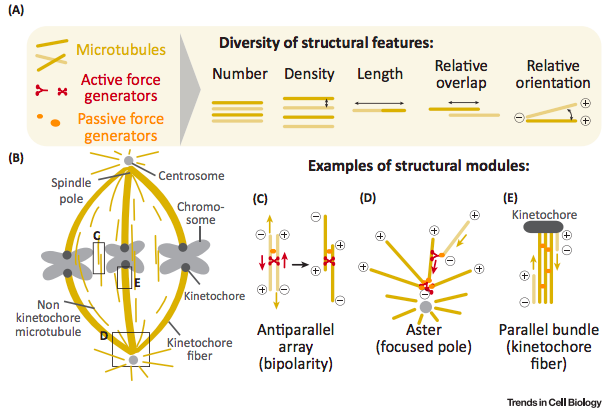Abstract
The spindle segregates chromosomes at cell division, and its task is a mechanical one. While we have a nearly complete list of spindle components, how their molecular-scale mechanics give rise to cellular-scale spindle architecture, mechanics, and function is not yet clear. Recent in vitro and in vivo measurements bring new levels of molecular and physical control and shed light on this question. Highlighting recent findings and open questions, we introduce the molecular force generators of the spindle, and discuss how they organize microtubules into diverse architectural modules and give rise to the emergent mechanics of the mammalian spindle. Throughout, we emphasize the breadth of space and time scales at play, and the feedback between spindle architecture, dynamics, and mechanics that drives robust function.
